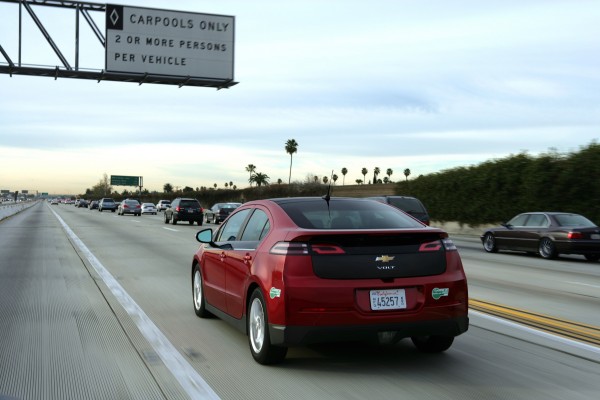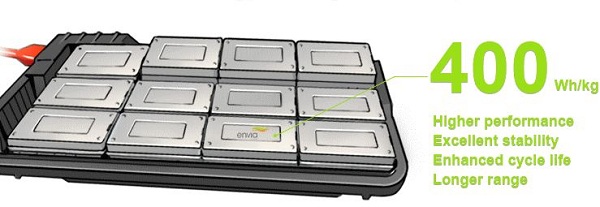Right now, it now seems as if the first American car to need no gas for most daily commutes has been short-circuited. The rollout of America’s GM Volt has been jolted, not just by an economy that has had Americans reeling for the last three years, but by attacks from media allies of the fossil fuel industry, like Rush Limbaugh and Fox News.
A calculated attack from one political party and its spokespeople on the first mass-produced American EV as an “Obama-mandated death trap” made by a “corporation that’s trying to kill its customers” has had its intended effect on sales.

This month, the Volt—the first mass market EV sedan—had to halt its U.S. production temporarily.
“We did not engineer the Volt to be a political punching bag,” new GM CEO Daniel Akerson said at a Congressional hearing in January. “And that, sadly, is what the Volt has become.”
The January congressional hearing—or inquisition?—at which Akerson testified was titled, in a reference to the Watergate coverup: “Volt Vehicle Fire: What Did NHTSA Know and When Did They Know It?”
The Republican-held House Oversight regulatory subcommittee trumped up charges of fire danger that were not borne out by the facts: that after six months of routine tests, the National Highway Traffic Safety Administration had cleared the Volt of any fire risk.
Republicans have never held hearings into fires in fossil-fueled cars, yet we have always lived with fire risk from gasoline ignition. In 2010 there were 184,500 fires in gasoline-powered cars, resulting in 285 deaths and 1,440 injuries (data).
So it seems as if the electric car has been killed for the second time. The first was in the ’90s, when under the less-enlightened leadership that drove the Big Three to bankruptcy, GM lawyered its own way out of Californian climate policy (like this current policy) that required the development of vehicles with low to no greenhouse gas emissions.
But that relationship broke up with the bailout. “The oil industry didn’t do us any favors when we were going through bankruptcy and they were making billions of dollars in profits,” GM’s new spokesman for environment and energy matters, Shad Balch, told the California Air Resources Board (CARB) in February.
This second death appears to end a progressive chapter in climate policy history, this time with Republicans as proxies for the fossil industry. But their opposition to gasoline competition didn’t just begin in the last year.
Although the nascent fossil industry received huge subsidies to get going (oil cost over $500 a barrel when it was first drilled in the 19th century), Republicans in Congress have consistently refused to allow anything other than a tax credit to subsidize the jump-starting of post-gasoline driving, which ensures that the only early adopters of the Volt are the few who remain financially secure after 2008.
If you don’t owe more than the tax credit in taxes, you can’t take the Volt’s $7,500 tax credit. Since the national median wage of $26,000 to $30,000 is in the 15 percent tax bracket (incurring taxes of under $5,000) this tax credit does not help most people afford the switch from a gas car, even though gas exacts a much heavier toll on the pocketbook over the years.
By contrast, Japan subsidized the beginnings of the Prius by paying half its initial cost, speeding the day that it became affordable.
However, things could change over the next few years.
The Obama administration—in the 2009 American Recovery & Reinvestment Act (ARRA), aka the stimulus—made a strategic investment in advanced battery technology, with a huge investment of more than $5 billion in grants and low-cost loans to battery manufacturers. The U.S. Department of Energy funded hundreds of companies, researchers, startups and university labs working on next-generation battery technology under the Recovery Act.
The announced goal was to cut battery costs in electric vehicles by 70 per cent by 2015, propelling the U.S. ahead of Japan and Korea to global leadership in the next generation of advanced electric vehicle technologies.
That investment is starting to bear fruit.
At last week’s ARPA-E summit, advanced battery technology was described by more than one CEO as a new boom.
Now, Envia, one of the companies funded, has just cut costs in half of future electric vehicle batteries.
Envia’s batteries have tested at 400 watt-hours per kilogram at a projected cost of $125 per kilowatt-hour (kWh). This is less than half of what automakers are paying today.
This could bring electric vehicle costs within range of the average 99-percenter’s paycheck.

The Department of Energy said it was aiming to cut battery costs from about $1,000 per kWh in 2009 to $300 by 2015 and to $100 by 2030. At the time it announced that goal, the only U.S. automaker shipping an electric car was a California startup, Tesla, and its battery cost $36,000 and weighed a whopping 992 pounds.
The many different battery innovations funded (which included every kind; from liquid batteries to metal-air batteries) should reduce battery weights 33 percent by 2015, so that less energy is wasted in moving an electric vehicle with the old heavier battery.
The funding targeted lengthening battery lifetimes to last 14 years by 2015, instead of the four years they lasted in 2008.
With last week’s announcement by Envia of a projected cost of $125 per kWh for its battery that will deliver two and a half times more energy than what’s in current EVs, this means that weight will be cut too. The 2012 Volt’s battery is just 400 pounds, and its cost for the first run was around $500-600/kWh, which put the 16-kWh pack in the $8,000-9,500 range.
At $125 per kilowatt-hour, Envia’s new battery would cut future EV battery costs by more than half, and shave at least $10,000 off the current price of the first iteration of the first Volt, at about $39,000 before tax credits.
Among the many high-tech battery companies funded by the Recovery Act, Envia had been funded with $4 million from ARPA-E to develop a high-energy density battery. Envia licensed the work of government scientists at the Department of Energy’s Argonne National Laboratory, who identified a material with a novel microscopic structure that could help improve the storage capacity of one of the battery electrodes.
Envia is still fine-tuning the number of recharges its battery can take—which needs to be doubled—but it expects to solve this within the next few years. GM, Ford and Chrysler all invested in the company as well, and will make use of the Envia breakthrough.
The resulting cheaper batteries in successor Volts alone could have a ripple effect across the global EV market, because worldwide, GM has rebounded to No. 1 automaker. More sales will help cut its price as the cost benefits of a standard production line yield savings.
In Europe—out of broadcast range of Rush Limbaugh and Fox News—GM already has 7,000 orders for its European Volt (called the “Ampera” there) and it expects to hit its target of 10,000 sales this year.
The critics of the Volt do not take into account that this much-derided Government Motors vehicle was the first mass market EV made in the U.S.—marking a radical change in transportation as big as the switch from horses to horsepower.
In manufacturing, first samples always cost more to make, sometimes 10 times as much. But we are seeing the birth of the post-peak oil car—that, over the next few years, will now come down in price enough to be sold at a mass market price.
And because of all the advanced battery tech investment by this administration, this could become a field in which the U.S. actually leads the way.
As Bill Gates said at the DOE’s ARPA-E Energy Innovation Summit, of which EarthTechling was a media partner, it is expected that 90 percent of innovations will fail.
This is the way innovation works. But you only need one big breakthrough for everyone to benefit.